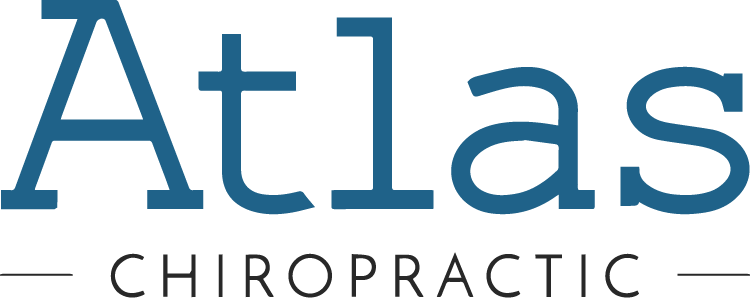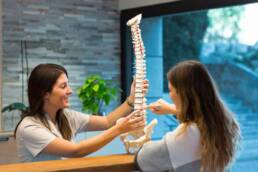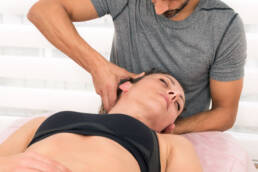According to the CDC 1 in 50 children will now be diagnosed with autism.
That is up from 1 in 10,000 in 1970s. To say there is a problem is a gross understatement.
It’s time for society, especially in Boulder Colorado, to start asking relevant questions. Like what has changed in this short amount of time to cause such an alarming rise?
This article won’t go into the various causes, but will instead look at one of the most overlooked factors affecting the quality of these children’s lives.
Life is How We Perceive It
I love the quote above because it incorporates two things I love: philosophy and science. No one would argue that our inner experience is a result of the cultural and familial “lens” we see the world through. Our beliefs and experience shape the way we see and interact in the world.
However, many people fail to contemplate how our nervous systems shape our perceptions and ability to respond and adapt to our environments in a healthy manner.
Think of your nervous system as a sponge. It constantly soaks in information through the five sensory organs.
Scientists have estimated that our sensory organs take in over 11 million bits of information every second and some estimates have total brain processing at 11 trillion bits per second!
Much of the sensory information is processed in the part of the brain known as the cerebellum, which is located just above the neck.
The incredible connectivity of the brain, however, is beyond our full comprehension. The image below depicts the amazingly intricate and complex neuronal connections.
With the promises of current and new technology we are learning more and more about how the brain works. What is clear is that in order to be able to perceive and respond to our environments correctly, we must be able to receive and process information properly.
Some of the most important data traveling to the brain is proprioceptive information. Proprioception is from Latin proprius, meaning “one’s own”, “individual” and perception. It is the process by which tiny nerve endings known as proprioceptors detect and relay information about our body to our brain so that we can properly understand and respond to where our body parts are in relation to other parts and our environment.
If the information received by the proprioceptive system and other neurological components is interfered with in any way as it travels to the brain, then naturally, our ability to respond to that information appropriately will be affected.
This is where a common physical condition known as vertebral subluxation comes into the picture for children within the spectrum and with other disorders as well. A vertebral subluxation is a misaligned vertebra affecting the function of the nervous system as the delicate spinal cord travels through the spinal column. This misalignment alters the information being delivered to the brain, the brain’s response and ultimately the quality of life of the individual.
The quality of our lives is dependent upon the information we receive and whether or not we are able to respond appropriately. Vertebral subluxation is a major source of interference to the nervous system that goes undetected in the majority of children within the autism spectrum.
Two studies, one featured in the February 2007 issue of Clinical Neurophysiology (1) and the other in March 2010 issue of the Chiropractic Journal of Australia (2), explore the issue of how vertebral subluxation impacts sensory processing and modulation and are worth reviewing.
In another study featured in the March 2006 issue of Clinical Chiropractic, researchers carried out a series of chiropractic adjustments on 26 autistic children over a 9-month period. Improvement was seen in certain reflexes and sensations, spinal motion, and improvement of other health problems.
Many of the children were able to discontinue medications aimed at controlling their behavior; bladder and bowel control improved; some children started to speak; eye contact and attention span improved while hyperactivity and aggressive behavior were reduced. Also, five children were able to attend regular classes at school for the first time.
I am currently collecting data for research here in Boulder into how vertebral subluxation correction impacts the quality of life of children who have been diagnosed with autism and associated disorders. If you would like to see if your child has vertebral subluxation and could benefit from care in our office, contact us at 303.442.5911.
A complimentary 15 minute consultation could provide the perspective you have been searching for. Schedule a consultation in our Boulder office to see if this approach may be the last variable to getting a complete picture of the puzzle that is Autism.
Autism & the Brain-Body Connection
How Chiropractic Care Impacts the Brain and Quality of Life of Children with Autism
This presentation explores one of the most common forms of neurological stress and how restoring normal function can result in quantifiable improvements in language, sociability and behavior in children with autism and other neurodevelopmental conditions.
For more information like this, please visit Dr. Steve Tullius’ website
References:
- National Institute of Neurological Disorders and Stroke, Brain Basics: Know Your Brain,https://www.ninds.nih.gov/disorders/brain_basics/know_your_brain.htm
- Stranding, S. (2008). Gray’s Anatomy, 40th Edition. The Anatomical Basis of Clinical Practice. Churchill Livingstone/Elsevier
- Herbert, N. (1994). Elemental Mind: Human Consciousness and the New Physics. Plume
- Purves D, Augustine GJ, Fitzpatrick D, et al., editors.Neuroscience. 2nd edition. Sunderland (MA): Sinauer Associates; 2001. Mechanoreceptors Specialized for Proprioception.
- Purves D, Augustine GJ, Fitzpatrick D, et al., editors.Neuroscience. 2nd edition. Sunderland (MA): Sinauer Associates; 2001. Nociceptors.
- Slosberg M,Effects of altered afferent articular input on sensation, proprioception, muscle tone and sympathetic reflex responses. Journal of Manipulative and Physiological Therapeutics
- Schultz RT.Developmental deficits in social perception in autism: the role of the amygdala and fusiform face area. Int J Dev Neurosci.2005;23 :125– 141
- Hua, X., Thompson, P. M., Leow, A. D., Madsen, S. K., Caplan, R., Alger, J. R., O’Neill, J., Joshi, K., Smalley, S. L., Toga, A. W. and Levitt, J. G. (2013),Brain growth rate abnormalities visualized in adolescents with autism. Hum. Brain Mapp., 34: 425–436. doi: 10.1002/hbm.21441
- Wan C.Structure of language pathways differs in non-verbal autism. Poster presentation at the 2011 Society for Neuroscience annual meeting.
- Stoodley C.Imaging finds cerebellar changes in autism, other disorders. Poster presentation at the 2011 Society for Neuroscience annual meeting.
- Mohan G.Is the autistic brain too wired or not wired enough? Los Angeles Times. June 27, 2013.
- Uddin LQ, Supekar K, Lynch CJ, et al.Salience Network–Based Classification and Prediction of Symptom Severity in Children With Autism. JAMA Psychiatry.2013;70(8):869-879. doi:10.1001/jamapsychiatry.2013.104.
- Doidge, N. (2007). The Brain that Changes Itself: Stories of Personal Triumph from the Frontiers of Brain Science. Penguin.
- Chestnut J. (2003). Fourteen Foundational Premises for the Scientific and Philosophical Validation of the Chiropractic Wellness Paradigm. The Wellness Practice – Global Self Health Corp.
- Haavik Taylor H, Holt K, Murphy B.Exploring the Neuromodulatory Effects of the Vertebral Subluxation and Chiropractic Care, Chiropractic Journal of Australia 2010; 40: 37-44.
- Haavik Taylor H, Murphy B. Cervical spine manipulation alters sensorimotor integration: A somatosensory evoked potential study, Clinical Neurophysiology, February 2007
- Haavik Taylor H, Murphy, B.The role of spinal manipulation in addressing disordered sensorimotor integration and altered motor control. Journal of Electromyography and Kinesiology, 2012 Oct;22(5):768-76.
- Haavik Taylor H., & Murphy, B. (2011).Subclinical neck pain and the effects of cervical manipulation on elbow joint position sense. Journal of manipulative and physiological therapeutics, 34(2), 88-97.
- Haavik Taylor, H., & Murphy, B. (2007).Transient modulation of intracortical inhibition following spinal manipulation. Chiropractic Journal of Australia, 37(3), 106.
- Haavik Taylor H, Murphy B. (2010).The effects of spinal manipulation on central integration of dual somatosensory input observed after motor training: a crossover study. Journal of manipulative and physiological therapeutics, 33(4), 261-272.
- Haavik Taylor H, Murphy B. (2010).Altered central integration of dual somatosensory input after cervical spine manipulation. Journal of manipulative and physiological therapeutics, 33(3), 178-188.
- Haavik Taylor H, Murphy, B. (2008).Altered sensorimotor integration with cervical spine manipulation. Journal of manipulative and physiological therapeutics, 31(2), 115-126.
- Grostic J.D.Dentate ligament–cord distortion hypothesis. Chiropractic Research Journal. 1998 p. 50.
- Pickar JG.Neurophysiological effects of spinal manipulation. Spine J. 2002;2(5):357-371.
- Seaman DR, Winterstein JF.Dysafferentation: A novel term to describe the neuropathophysiological effects of joint complex dysfunction. A look at likely mechanisms of symptom generation. J Manipulative Physiol Ther 1998;21(4):267-280.
- Sato A, Swenson RS.Sympathetic nervous system response to mechanical stress of the spinal column of rats. J Manipulative Physiol Ther 1984;7(3):141-147.
- Sato A.The reflex effects of spinal somatic nerve stimulation on visceral function. J Manipulative Physiol Ther 1992;15:57-61.
- Sato A.Neural mechanisms of autonomic responses elicited by somatic sensory stimulation. Neurosci Behav Physiol 1997;27(5):610-621.
- Bolton PS.Reflex effects of vertebral subluxations: The peripheral nervous system. An update. J Manipulative Physiol Ther 2000;23(2):101-103.
- Bolton PS.The somatosensory system of the neck and its effects on the central nervous system. J Manipulative Physiol Ther 1998;21(8):553-563.
- Budgell B, Hotta H, Sato A. Spinovisceral reflexes evoked by noxious and innocuous stimulation of the lumbar spine. JNMS 1995;3(3):122-131.
- Carrick FR.Changes in brain function after manipulation of the cervical spine. J Manipulative Physiol Ther 1997;20(8):529-545.
- Harris W, Wagnon RJ.The effects of chiropractic adjustments on distal skin temperature. J Manipulative Physiol Ther. 1987;10(2):57-60
- Budgell B, Polus B,The effects of thoracic manipulation on heart rate variability: A controlled crossover trial. J Manipulative Physiol Ther 2006;28(8):603-610.
- Budgell B, Hirano F.Innocuous mechanical stimulation of the neck and alterations in heart-rate variability in healthy young adults. Auton Neurosci. 2001;91(1-2):96-99.
- Swensen D.Heart Rate Variability and Spinal Manipulation: A Review of the Literature. JACO Dec 2011.
- Dimmick KR, Young MF, Newell D.Chiropractic manipulation affects the difference between arterial systolic blood pressures on the left and right normotensive subjects. J Manipulative Physiol Ther 2006;29(1):46-50
- Igarashi Y, Budgell BS.Response of arrhythmia to spinal manipulation: Monitoring by ECG with analysis of heart-rate variability. Chiropr J Aust 2000;30(3):92-95.
- McLain, R. F. (1994).Mechanoreceptor endings in human cervical facet joints. Spine, 19(5), 495-501.
- Daligadu, J. (2012).Cortical and cerebellar motor processing changes subsequent to motor training and cervical spine manipulation.
- Marshall, L. D. (2013).The effect of cervical spine manipulation on elbow joint position sense in patients with acute cervical facet syndrome.
- Schmahmann, J.Disorders of the Cerebellum: Ataxia, Dysmetria of Thought, and the Cerebellar Cognitive Affective Syndrome. The Journal of Neuropsychiatry and Clinical Neurosciences 2004;16:367-378.10.1176/appi.neuropsych.16.3.367
- Whatmore, G. B. and Kohli, D. R. (1968),Dysponesis: A neurophysiology factor in functional disorders. Syst. Res., 13: 102–124. doi: 10.1002/bs.3830130203
- Kent C.A Four-Dimensional Model of Vertebral Subluxation. Dynamic Chiropractic – January 1, 2011, Vol. 29, Issue 01
- Kent C.Chaos Theory, Heart Rate Variability and Vertebral Subluxation. Chiropractic Leadership Alliance website.
- Zhang J, Dean D, Nosco D, Strathopulos D, Floros M.Effect of chiropractic care on heart rate variability and pain in a multisite clinical study. J.Manipulative Physiol Ther. 2006;29:267–274.
- Gutman G.Blocked atlantal nerve syndrome in infants and small children. Originally published in Manuelle Medizin, 25:5-10,1987. English translation published in International Review of Chiropractic 1990 46(4):37.
- Towbin A.Latent spinal cord and brain stem injury in newborn infants. Develop Med Child Neurol 1969;11:54.
- Frymann, V. Relation disturbances craniosacral mechanisms to symptomatology of the newborn: Study of 1,250 infants. JAOA. 1966. 65:1059-1075.
- Campbell CJ, Kent C, Banne A, et al:Surrogate indication of DNA repair In serum after long term chiropractic intervention: a retrospective study. J Vertebral Subluxation Res, Feb, is ,2005:1- 5.
- Khaled A. Khorshid K, Sweat R, Zemba D, Zemba B.Clinical Efficacy of Upper Cervical Versus Full Spine Chiropractic Care on Children with Autism: A Randomized Clinical Trial, Journal of Vertebral Subluxation Research, March 9, 2006, pp 1-7
- Jennings J, Barker M. Autism: a chiropractic perspective. Clin Chiropr: MAR 2006(9:1) 6-10.
- Collection of Journal Abstracts, studies and personal accounts
About Atlas Chiropractic of Boulder
At Atlas Chiropractic of Boulder we are not only concerned about your symptoms, but also you as a person and what is important to you. We know that not everyone’s the same and not everyone has the same goals. It is important to us that we present a chiropractic care plan that works for you and is tailored to you and your health concerns.
We’re a specialty Boulder Chiropractor focused on back pain, neck pain, vertigo, and migraine headaches. Our patients visit our Boulder office from all over Northern Colorado, including, Longmont, Erie, Superior, Lafayette, Niwot, Louisville, Broomfield, and Denver, Colorado.
Contact Atlas Chiropractic of Boulder today to schedule a free evaluation. Specialized upper cervical chiropractic care is by no means a “hail Mary” solution, but if you haven’t yet seen Dr. Bremner, you’re nowhere close to running out of options.

Schedule your FREE 15 minute consultation with Atlas Chiropractic
At Atlas Chiropractic, our Greater Boulder area chiropractors specialize in providing relief for individuals experiencing back, neck, or shoulder pain, as well as those dealing with headaches or vertigo. We offer specialized chiropractic care and tailored spinal adjustments, along with expert opinions and advice.





